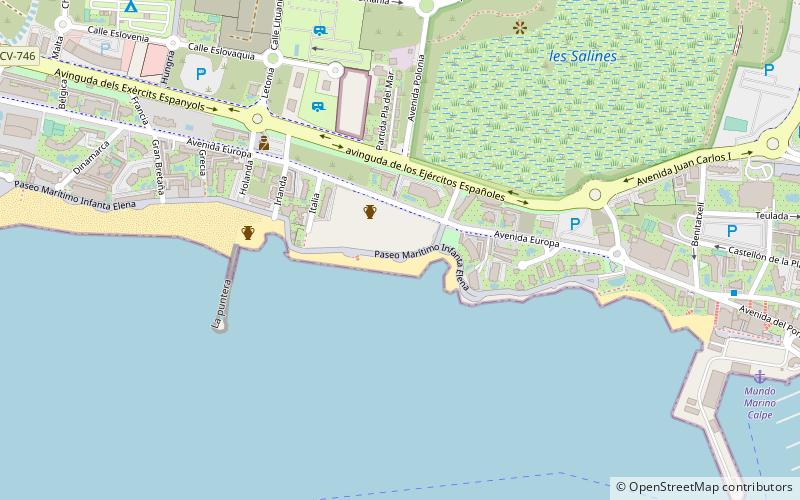Banys de la Reina, Calpe


Facts and practical information
Los Baños de la Reina is an archaeological site located next to the salt pans of Calpe. It consisted of a Roman palace with a corridor, a courtyard and eight rooms. Its profusion of marble and mosaics reveal that it belonged to a person with high purchasing power. Among other elements, near the coastline there are artificial pools excavated in rock for fish farming and subsequent salting of fish, some baths, a waterwheel and four cisterns. Its 0.39 hectares also form a micro-reserve of flora. The house and its thermal building were built at the end of the 2nd or beginning of the 3rd century and abandoned at the beginning of the 5th century.
The structures were located in 1610 by Gaspar Juan Escolano and excavated on 18 and 19 May 1792 by Cavanilles. Their discovery was published in the Gazeta de Madrid. Their discovery was published in the Gazeta de Madrid. After the excavations in September 1965 by Manuel Pellicer Catalán and, above all, after the excavations carried out between 1993 and 1999, the ground plan of the complex has been determined, identifying it as a vicus of three houses whose economic orientation was the elaboration of wine, fishing, production of garum, salting and extraction of stone. Sepulchres have been found.
It is planned to sign an agreement between the Diputación de Alicante and Calpe to consolidate the archaeological remains with the collaboration of the MARQ.
Banys de la Reina – popular in the area (distance from the attraction)
Nearby attractions include: Playa de Levante o La Fossa, Playa del Cantal Roig, Mercadillo Privado, Penyal d'Ifac Natural Park.




